- Home
- Bobby Akart
Economic Collapse (Prepping for Tomorrow Book 2) Page 11
Economic Collapse (Prepping for Tomorrow Book 2) Read online
Page 11
Investors, unfortunately, seem to make the same mistakes in marshaling their resources as do the generals. If the last thirty years have been prosperous, they base their actions on more prosperity. Talk of a depression isn't real to them because things are, in fact, so different from the 1930s. To most people, a depression means thirties-style conditions, and since they don't see that, they can't imagine a depression. Because most modern-day investors don't know what the last depression was like, it's hard to visualize something you don't understand.
It's impossible to predict with absolute certainty how the next depression will affect the world's economy, but you can be well-assured it won't be an instant replay of the last one. To define the likely differences between the Great Depression, and the next one, it's helpful to compare the situation today to that in the early 1930s.
CORPORATE BANKRUPTCY
1930s
Banks, insurance companies, and big corporations went under on a major scale. Institutions suffered the consequences of past mistakes, and there was no financial safety net to catch them as they fell. Mistakes were liquidated and only the prepared and efficient survived.
Today
The world's financial institutions are in even worse shape than the last time, but now business ethics have changed and everyone expects the government to initiate a bailout. Laws are already in place that not only allow, but require, government intervention in many instances. This time, mistakes will be compounded, and the strong, productive, and efficient will be forced to subsidize the weak, unproductive, and inefficient. It's ironic that businesses were bankrupted in the last depression because the prices of their products fell too low. This time, with the policies put into place after the 2008 market crash, it'll be because prices went too high.
THE UNEMPLOYED
1930s
If a man lost his job, he had to find another one as quickly as possible to keep from going hungry. A lot of other men in the same position competed desperately for what work was available, and an employer could hire those same men for much lower wages and expect them to work harder than what was the case before the Great Depression. As a result, the men could get jobs and the employer could stay in business.
Today
The average unemployed worker has many months of unemployment insurance available. After that, he can go on welfare if he can't find suitable work. Instead of taking whatever work is available, especially if it means that a white collar worker has to get his hands dirty, many will go on welfare. This will decrease the production of new wealth and delay the recovery. The worker no longer has to worry about entrepreneurs exploiting (i.e., employing) him at what he considers an unfair wage because the minimum wage laws, among others, precludes that possibility today. As a result, men remain unemployed and employers run the risk of going out of business.
THE WELFARE STATE
1930s
If hard times really put a man down and out, he had little recourse but to rely on his family, friends, or local social and church group. There was quite a bit of shame attached to that, and it was only a last resort. The breadlines set up by various government agencies were largely cosmetic measures to soothe the voting populic. Americans made do because they had to, and that meant radically reducing their standards of living and taking any job available at any wage. There were very few people on welfare during the Great Depression.
Today
There are insufficient Americans working today to support those who aren't. Entitlements in the U.S. are the primary cause of our ever-growing national debt. Half of Americans are on some form of government benefits—before the next Depression. But food stamps, aid to families with dependent children, Social Security, and local programs are already collapsing in prosperous times. And when the tidal wave hits, they'll be totally overwhelmed. There aren't going to be any breadlines because people who would be standing in them are going to be shopping in local supermarkets just like people who earned their money. Perhaps the most dangerous aspect of it is that people in general have come to think that these programs can just magically make wealth appear, and they expect them to be there, while a whole class of people have grown up never learning to survive without them. It's ironic, yet predictable, that the programs that were supposed to help those who are entitled to them will serve to devastate those very people.
BURDENSOME REGULATIONS
1930s
Most western economies have been fairly heavily regulated since the early 1900s, and those regulations caused distortions that added to the severity of the Great Depression. Rather than allow the economy to liquidate, in the case of the U.S., the Roosevelt administration added many more regulations fixing prices, wages, and the manner of doing business. It was largely because of these regulations that the Great Depression lingered on until World War II, which saved the economy only through its massive reinflation of the U.S. currency. Economists believe that had the government abolished most controls then in existence, instead of creating new ones, the Depression would have been less severe and much shorter.
Today
The scores of new agencies set up since the Great Depression have created far more severe distortions in the ways people relate than those of eighty years ago. Unless government restrictions and controls on wages, working conditions, energy consumption, safety, and such are removed, a dramatic economic turnaround during the next depression will be impossible.
TAX BURDEN
1930s
The income tax was new to the U.S. in 1913, and by 1929, although it took a maximum 23.1% bite, that was only at the $1 million level. The average family's income then was $2,335, and that put average families in the 1/10th of 1 percent bracket. At the time, there was no Social Security tax, no state income tax, no sales tax, and no estate tax. Furthermore, most people in the country didn't even pay the income tax because they earned less than the legal minimum. The government, therefore, had immense untapped sources of revenue to draw upon to fund its schemes to counteract effects of the Great Depression. Roosevelt was able to raise the average income tax from 1.35% to 16.56% during his terms in office—an increase of 1,100%.
Today
Everyone now pays an income tax in addition to all the other taxes levied by the federal, state, and local governments. In most Western countries, the total of direct and indirect taxes is over fifty percent. For that reason, it seems unlikely that direct taxes will go much higher. But inflation is constantly driving everyone into higher brackets and will have the same effect. A family must increase their income faster than inflation to compensate for taxes. Whatever taxes a man does pay will reduce his standard of living by just that much, and it's reasonable to expect tax evasion and the underground economy would boom in response.
PRICES OF GOODS AND SERVICES
1930s
Prices dropped radically because billions of dollars of inflationary currency were wiped out through the stock market crash, bond defaults, and bank failures. The government, however, somehow equated the high prices of the inflationary 1920s with prosperity and attempted to prevent a fall in prices by such things as slaughtering livestock, dumping milk in the gutter, and enacting price supports. Since the collapse wiped out money faster than it could be created, the government felt the destruction of real wealth was a more effective way to raise prices. In other words, if you can't increase the supply of money, decrease the supply of goods-basic Keynesian economics.
Nonetheless, the Great Depression was a deflationary collapse, a time when currency became worth more and prices dropped. Most Americans will assume—as a result of that experience—that depression means deflation. It's also perhaps the biggest single difference between this depression and the last one.
Today
Prices could drop as they did during the Great Depression, but the amount of power the government now has over the economy is far greater than what was the case eighty-five years ago. Instead of letting the economy cleanse itself by allowing the financial markets to collapse,
governments will probably bail out insolvent banks, create government-backed debt to prop up real estate, the automobile industry, and education while the world's central banks will buy bonds to keep their currency values from plummeting. All of these actions mean that the total money supply will grow enormously. Trillions will be created to avoid deflation.
Consumer prices will probably skyrocket as a result, and the country will have an inflationary depression. Unlike the 1930s, when people who held dollars were king, by the end of the next depression, people holding dollars will be wiped out.
SOCIETAL COLLAPSE
1930s
The world was largely rural at the time of the Great Depression. Communications were slow, but people tended to trust the media. The government exercised considerable moral persuasion, and people tended to support it. The business of the country was business, as Calvin Coolidge said, and men who created wealth were esteemed. All told, if you were going to have a depression, it was a rather stable environment for it. Despite this we're all in this together mindset, however, there were still plenty of riots, marches, and societal unrest.
Today
The country is now urban and suburban, and although communications are rapid, there's little interpersonal contact. The mainstream media is suspect and viewed with contempt. The government is seen more as an adversary, or tyrannical, than as an arbitrator accepted by a consensus of concerned citizens. Businessmen are viewed as unscrupulous predators who take advantage of anyone weak enough to be exploited.
A major financial downturn in today's atmosphere could do a lot more than wipe out a few poorly positioned investors in the stock market and unemploy some workers, as occurred in the Great Depression. Some sectors of society are now ticking time bombs. How will Americans react to a notification that their banks are closed and their government entitlements are cut-off?
THE WAY PEOPLE WORK
1930s
Relatively slow transportation and communication localized economic conditions. The U.S. itself was somewhat insulated from the rest of the world, and parts of the nation were relatively self-contained. Workers were mostly involved in basic agriculture and industry, creating widgets and other tangible items. There wasn't a reliance on specialized training which made it easier for someone to move laterally from one occupation to the next, without extensive retraining, since people were more able to produce the basics of life on their own. Most women never joined the workforce, and the wife in a marriage acted as a backup should the husband lose his job.
Today
The whole world is interdependent, and a war in the Middle East or a military skirmish on the Korean Peninsula can have a direct and immediate effect on a retail store owner in Atlanta or Berlin. Since the whole economy is centrally controlled from Washington, a mistake there can be a national disaster. People generally aren't in a position to roll with the punches as more than half the people in the country belong to what is known as the service economy. That means, in most cases, they're better equipped to shuffle papers than make widgets. Even necessary services are often terminated when times get hard. Specialization is part of what an advanced industrial economy is all about, but if the economic order changes radically, it can prove a liability.
THE FINANCIAL MARKETS
1930s
The Great Depression is identified with the collapse of the stock market, which lost over ninety percent of its value from 1929 to 1933. A secure bond was the best possible investment as interest rates dropped radically. Commodities plummeted, reducing millions of farmers to near subsistence levels. Since most real estate was owned outright and taxes were low, a drop in price didn't make a lot of difference unless you had to sell. Land prices plummeted, but since people bought it to use, not for speculation, they didn't usually have to sell.
Today
In the current economic climate, both stocks and commodities are likely to increase in value. Real estate will be, next to bonds, the most devastated single area of the economy because no one will lend money long term. And real estate is built on the mortgage market, which will vanish.
The differences in the economic conditions of the Great Depression and the climate of today run deeper than this brief summary. The similarities can be summed up as follows: The crucial, obvious, and most important similarity, however, is that most people's standard of living will fall dramatically. Some economists believe the next depression is in its early stages. Most people don't know it because they can neither confront the thought nor understand the differences between this one and the 1930s version.
As the collapse approaches, perhaps exacerbated by a catastrophic event, many of the things that you've built your life around in the past are going to change dramatically. The ability to adjust to new conditions is the sign of a psychologically healthy person. Look for the opportunity side of the crisis. The Chinese symbol for crisis is a combination of two other symbols—one for danger and one for opportunity.
The risks that society will face in the years ahead are regrettable, but there's no point in allowing anxiety, frustration, or apathy to overcome you. Face the future with courage, curiosity, and optimism rather than fear. You can be a survivor of the coming economic collapse if you prepare carefully.
Could it happen again? Without a doubt.
Chapter Fifteen
The Greatest Market Crashes
Economic collapse has occurred throughout history, but there are varying degrees of market crashes. It's important to identify the differences between crashes, corrections, and bubbles.
A stock market bubble is a rare event, but in today's 24/7 media cycle and entire networks being devoted just to the coverage of financial markets, the term gets overused. The media has a tendency to use the word bubble whenever they deem an asset to be overvalued.
An economic bubble occurs when fluctuations in market trading drive the equities' price above their value. Bubbles are also associated with human behavioral theory and their mentality. A bubble takes place when investors put so much demand on a stock that they drive the price beyond any accurate or reasonable measure of its actual value. Prudent investing dictates that a stock price should be determined by the performance of the underlying company. Like a helium filled balloon, market bubbles appear as though they will rise into space, but since they are not formed on any rational basis, they eventually pop. When the bubble bursts, the investment disappears.
A market crash is a sudden drop in the value of financial markets all across the spectrum, not just stocks, but also commodities, oil, and tulips. Yes, Tulipmania is commonly known as the first stock market crash.
Typically associated with the popping of a bubble, a market crash is a situation wherein the majority of investors are trying to flee the market at the same time, causing a massive loss in total market value. Attempting to avoid more losses, investors during a crash create panic selling, hoping to unload their declining stocks onto other investors. This panic selling contributes to the declining market, which eventually crashes and affects everyone. Throughout history, market crashes have been associated with an economic depression.
It is important to note the distinction between a crash and a correction, which can be a bit sticky at times. A correction is a warning sign to overly optimistic investors. A correction is a negative movement in the stock market of at least ten percent, but doesn't exceed a twenty percent loss of value. Surprisingly, some crashes have been erroneously labeled as corrections, including the terrifying crash of 1987. They are also considered temporary, lasting only days or weeks. A correction is also more substantial than the traditional bear market. A crash is characterized by a sudden and dramatic decline, across multiple markets, for a sustained period of time.
In addition to The Great Depression, here are some other market crashes of note.
Tulipmania: 1634, Holland
Over four hundred years ago, the entire country of Holland became obsessed with tulips. A flower native to Turkey, it became such a novelty that it
s price was driven higher and higher. Having been introduced into a non-native environment, the tulips contracted a rare virus called a mosaic. This virus did not kill the plant, but it altered the genetics of the flowers to create a beautiful array of colors to appear on the petals, much like a flame. The unusual color combinations and patterns only increased the desire of the Dutch for the tulip bulbs.
The rarity of this beautiful flower grew as demand skyrocketed. The bulbs, which were already selling at a premium, began to gain value according to their mosaic alterations. Soon, everyone in the country started dealing in the bulbs, creating a massive speculative market—a bubble.
Dutch bulb buyers, the predecessor to your local garden center, began to fill up inventories for the growing season, depleting the supply further and increasing scarcity and demand. Prices began rising so fast and high that people were trading their land, life savings, and anything else they could liquidate to get more tulip bulbs. Many Dutch persisted in believing they would sell their hoard to hapless and unenlightened foreigners, thereby reaping enormous profits. During one period of trading, the already overpriced tulips gained twenty time their value—in one month!
The price swings were not caused by increases in production costs or an increased usage required for the greater good of the Dutch people. Tulipmania was a result of irrational, rampant speculation on a particular commodity. A bubble was created, artificially raising the value of the commodity, in this case tulips, and when the bubble burst, the value of the commodity crashed hard. A domino effect of progressively lower and lower prices took place as everyone tried to sell while demand was very low. The bubble was ready to explode because the prices were not an accurate reflection of the value of a tulip bulb.
The South Sea Bubble: 1711, United Kingdom
In the eighteenth century, the British Empire was the western world's largest trading partner. It was a period of growth and opulence for the British, especially the wealthy who had a significant amount of disposal income to invest. The South Sea Company was one of the few companies offering stock shares at the time. Along with the East India Company, the South Sea Company enjoyed favorable relationships with the British government, and its trading partners throughout Europe and the Mediterranean.

 Geostorm The Collapse: A Post Apocalyptic EMP Survival Thriller (The Geostorm Series Book 3)
Geostorm The Collapse: A Post Apocalyptic EMP Survival Thriller (The Geostorm Series Book 3)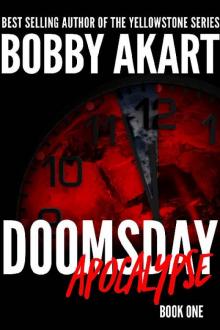 Doomsday Apocalypse
Doomsday Apocalypse Nuclear Winter Desolation: Post Apocalyptic Survival Thriller (Nuclear Winter Series Book 5)
Nuclear Winter Desolation: Post Apocalyptic Survival Thriller (Nuclear Winter Series Book 5)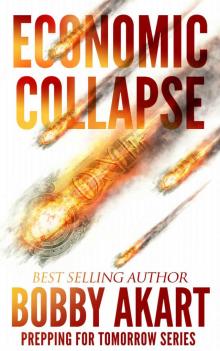 Economic Collapse (Prepping for Tomorrow Book 2)
Economic Collapse (Prepping for Tomorrow Book 2) Nuclear Winter Armageddon
Nuclear Winter Armageddon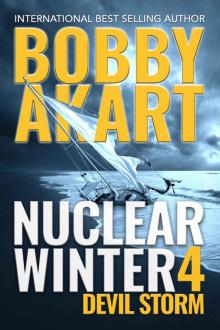 Nuclear Winter Devil Storm
Nuclear Winter Devil Storm Virus Hunters 3: A Medical Thriller
Virus Hunters 3: A Medical Thriller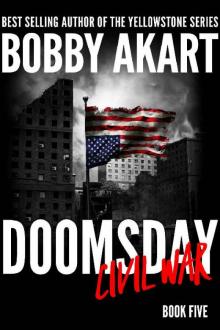 Doomsday Civil War: A Post-Apocalyptic Survival Thriller (The Doomsday Series Book 5)
Doomsday Civil War: A Post-Apocalyptic Survival Thriller (The Doomsday Series Book 5)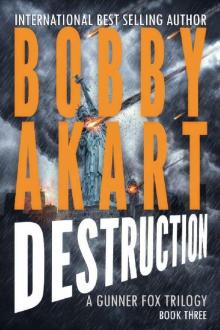 Asteroid Destruction
Asteroid Destruction Geostorm the Shift
Geostorm the Shift Asteroid Discovery
Asteroid Discovery Virus Hunters 2: A Medical Thriller
Virus Hunters 2: A Medical Thriller Geostorm The Shift: A Post-Apocalyptic EMP Survival Thriller (The Geostorm Series Book 1)
Geostorm The Shift: A Post-Apocalyptic EMP Survival Thriller (The Geostorm Series Book 1) Asteroid Diversion
Asteroid Diversion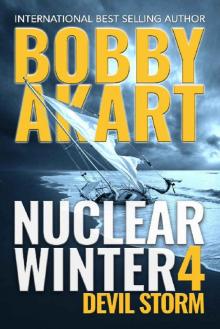 Nuclear Winter Devil Storm: Post Apocalyptic Survival Thriller (Nuclear Winter Series Book 4)
Nuclear Winter Devil Storm: Post Apocalyptic Survival Thriller (Nuclear Winter Series Book 4) Geostorm The Pulse: A Post Apocalyptic EMP Survival Thriller (The Geostorm Series Book 2)
Geostorm The Pulse: A Post Apocalyptic EMP Survival Thriller (The Geostorm Series Book 2)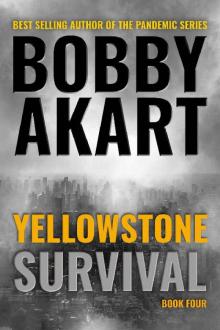 Yellowstone: Survival: A Post-Apocalyptic Survival Thriller (The Yellowstone Series Book 4)
Yellowstone: Survival: A Post-Apocalyptic Survival Thriller (The Yellowstone Series Book 4)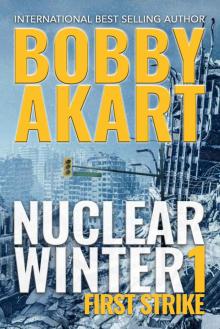 Nuclear Winter First Strike: Post-Apocalyptic Survival Thriller
Nuclear Winter First Strike: Post-Apocalyptic Survival Thriller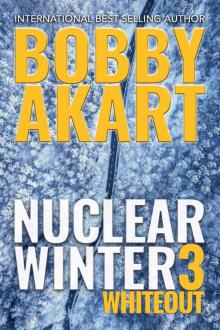 Nuclear Winter Whiteout
Nuclear Winter Whiteout Doomsday Anarchy
Doomsday Anarchy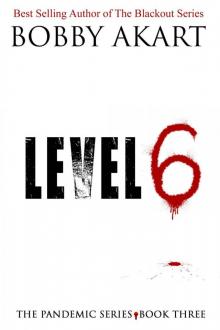 Pandemic: Level 6: A Post Apocalyptic Medical Thriller Fiction Series (The Pandemic Series Book 3)
Pandemic: Level 6: A Post Apocalyptic Medical Thriller Fiction Series (The Pandemic Series Book 3) Martial Law
Martial Law Odessa Reborn: A Terrorism Thriller (Gunner Fox Book 4)
Odessa Reborn: A Terrorism Thriller (Gunner Fox Book 4)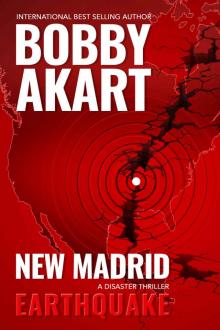 New Madrid Earthquake
New Madrid Earthquake Beyond Borders: Post Apocalyptic EMP Survival Fiction (The Lone Star Series Book 2)
Beyond Borders: Post Apocalyptic EMP Survival Fiction (The Lone Star Series Book 2)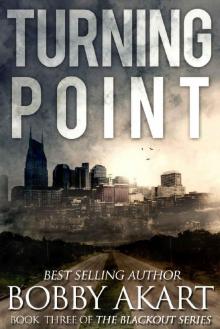 The Blackout Series (Book 3): Turning Point
The Blackout Series (Book 3): Turning Point Patriot's Farewell: A Political Thriller Fiction Series (Boston Brahmin Political Thrillers Book 7)
Patriot's Farewell: A Political Thriller Fiction Series (Boston Brahmin Political Thrillers Book 7)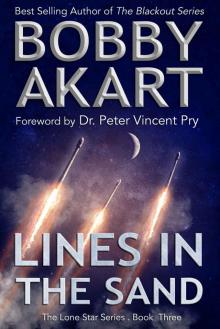 Lines in the Sand_Post Apocalyptic EMP Survival Fiction
Lines in the Sand_Post Apocalyptic EMP Survival Fiction The Mechanics: A Post-Apocalyptic Fiction Series
The Mechanics: A Post-Apocalyptic Fiction Series The Loyal Nine
The Loyal Nine Axis of Evil
Axis of Evil Axis of Evil: Post Apocalyptic EMP Survival Fiction (The Lone Star Series Book 1)
Axis of Evil: Post Apocalyptic EMP Survival Fiction (The Lone Star Series Book 1) Lines in the Sand: Post Apocalyptic EMP Survival Fiction (The Lone Star Series Book 3)
Lines in the Sand: Post Apocalyptic EMP Survival Fiction (The Lone Star Series Book 3) Odessa Strikes
Odessa Strikes The Blackout Series (Book 4): Shiloh Ranch
The Blackout Series (Book 4): Shiloh Ranch Hornet's Nest: A Post Apocalyptic EMP Survival Fiction Series (The Blackout Series Book 5)
Hornet's Nest: A Post Apocalyptic EMP Survival Fiction Series (The Blackout Series Book 5) Yellowstone: Fallout: A Post-Apocalyptic Survival Thriller (The Yellowstone Series Book 3)
Yellowstone: Fallout: A Post-Apocalyptic Survival Thriller (The Yellowstone Series Book 3) Electromagnetic Pulse
Electromagnetic Pulse Texas Strong: Post Apocalyptic EMP Survival Fiction (The Lone Star Series Book 4)
Texas Strong: Post Apocalyptic EMP Survival Fiction (The Lone Star Series Book 4) Fifth Column_Post Apocalyptic EMP Survival Fiction
Fifth Column_Post Apocalyptic EMP Survival Fiction Patriot's Farewell
Patriot's Farewell Texas Strong_Post Apocalyptic EMP Survival Fiction
Texas Strong_Post Apocalyptic EMP Survival Fiction Pandemic: The Innocents: A Post-Apocalyptic Medical Thriller Fiction Series (The Pandemic Series Book 2)
Pandemic: The Innocents: A Post-Apocalyptic Medical Thriller Fiction Series (The Pandemic Series Book 2) Shiloh Ranch: A Post Apocalyptic EMP Survival Fiction Series (The Blackout Series Book 4)
Shiloh Ranch: A Post Apocalyptic EMP Survival Fiction Series (The Blackout Series Book 4) Cyber Attack
Cyber Attack Beyond Borders
Beyond Borders Choose Freedom: A Post-Apocalyptic Fiction Series (The Boston Brahmin Book 6)
Choose Freedom: A Post-Apocalyptic Fiction Series (The Boston Brahmin Book 6) False Flag
False Flag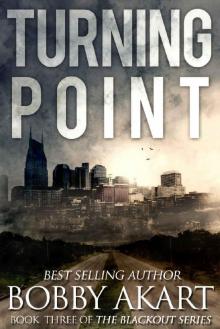 Turning Point: A Post Apocalyptic EMP Survival Fiction Series (The Blackout Series Book 3)
Turning Point: A Post Apocalyptic EMP Survival Fiction Series (The Blackout Series Book 3)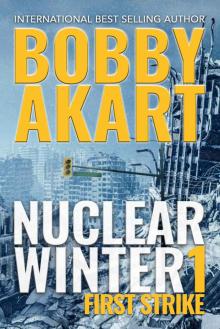 Nuclear Winter First Strike
Nuclear Winter First Strike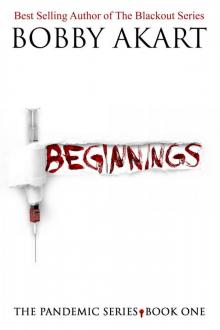 Pandemic: Beginnings: A Post-Apocalyptic Medical Thriller Fiction Series (The Pandemic Series Book 1)
Pandemic: Beginnings: A Post-Apocalyptic Medical Thriller Fiction Series (The Pandemic Series Book 1) Devil's Homecoming: A Post Apocalyptic EMP Survival Fiction Series (The Blackout Series Book 6)
Devil's Homecoming: A Post Apocalyptic EMP Survival Fiction Series (The Blackout Series Book 6) The Blackout Series (Book 6): Devil's Homecoming
The Blackout Series (Book 6): Devil's Homecoming Yellowstone: Inferno: A Post-Apocalyptic Survival Thriller (The Yellowstone Series Book 2)
Yellowstone: Inferno: A Post-Apocalyptic Survival Thriller (The Yellowstone Series Book 2) Fifth Column: Post Apocalyptic EMP Survival Fiction (The Lone Star Series Book 5)
Fifth Column: Post Apocalyptic EMP Survival Fiction (The Lone Star Series Book 5) Yellowstone: Hellfire: A Post-Apocalyptic Survival Thriller (The Yellowstone Series Book 1)
Yellowstone: Hellfire: A Post-Apocalyptic Survival Thriller (The Yellowstone Series Book 1) The Blackout Series (Book 2): Zero Hour
The Blackout Series (Book 2): Zero Hour Suicide Six: Post Apocalyptic EMP Survival Fiction (The Lone Star Series Book 6)
Suicide Six: Post Apocalyptic EMP Survival Fiction (The Lone Star Series Book 6) Suicide Six_Post Apocalyptic EMP Survival Fiction
Suicide Six_Post Apocalyptic EMP Survival Fiction Zero Hour: A Post-Apocalyptic EMP Survival Fiction Series (The Blackout Series Book 2)
Zero Hour: A Post-Apocalyptic EMP Survival Fiction Series (The Blackout Series Book 2) Beyond Borders_Post Apocalyptic EMP Survival Fiction
Beyond Borders_Post Apocalyptic EMP Survival Fiction Pandemic: Quietus: A Post-Apocalyptic Dystopian Fiction Series (The Pandemic Series Book 4)
Pandemic: Quietus: A Post-Apocalyptic Dystopian Fiction Series (The Pandemic Series Book 4)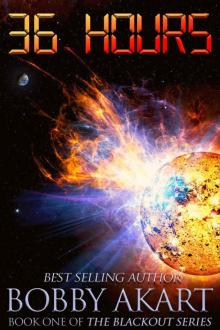 36 Hours: A Post-Apocalyptic EMP Survival Fiction Series
36 Hours: A Post-Apocalyptic EMP Survival Fiction Series Cyber Warfare
Cyber Warfare